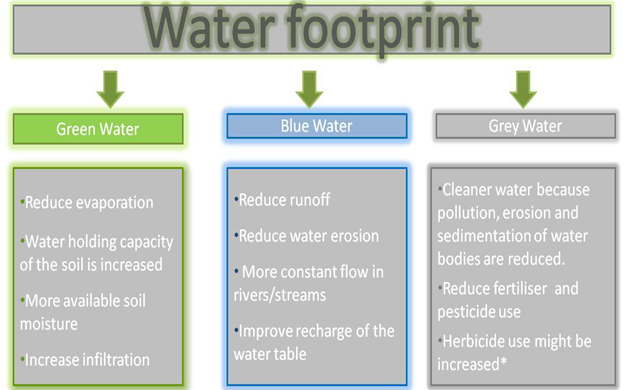Authors: Jyoti Chauhan.Sneha Kumari, Anshul Gupta and Seema
Tillage refers to the mechanical manipulation of the soil with tools and implements so as to create favorable soil conditions for better seed germination and subsequent growth of crops.The word tillage is derived from the Anglo-Saxon words tilian and teolian, meaning to plough and prepare soil for seed to sow, to cultivate and to raise crop.Jethrotull considered as Father of tillage. Conservation tillage is a type of tillage or a modern concept of tillage.
Introduction
The Conservation Technology Information Center (CTIC) defines Conservation Tillage(CT) is technically as a crop system where at least 30% of the soil is covered with crop residue after planting. These residues protect the soil from erosion, wind and water. The operating principle behind conservation tillage is to minimize the disturbance of the soil. As its name implies, conservation tillage conserves soil by reducing erosion. In the Midwest, erosion by water is the primary concern, whereas western regions of the country are more susceptible to wind erosion. Conventional tillage, such as moldboard plowing, leaves the soil surface bare and loosens soil particles, making them susceptible to the erosive forces of wind and water. Conservation tillage practices reduce erosion by protecting the soil surface and allowing water to infiltrate instead of running off.
DEFENITION
Baker et al state that “Conservation tillage is the collective umbrella term commonly given to no-tillage, direct drilling, minimum tillage and ridge tillage, to denote that the specific practice has a conservation goal of nature. Usually, the retention of 30% surface cover by residues characterizes the lower limit of classification for conservation tillage. Other conservation objectives for the practice include conservation of time, fuel, earthworms, soil water, soil structure and nutrients. Thus residue levels alone do not adequately describe all conservation tillage practices
FAO describes CT as “ a set of practices that leave crop residues on the surface which increases water infiltration and reduces erosion. It is a practice used in conventional agriculture to reduce the effects of tillage on soil erosion. “
Agroecological differences between conventional and no-tillage system.
| Conventional Tillage | No tillage |
| Greater NO3 and nutrient losses in deep percolation -Groundwater Pollution | Clean water drained |
| Periodically bare soil | Permanent soil cover (organic residues) |
| High temperature fluctuations | More stable temperatures throughout the day and the year |
| Unstable mechanical porosity | Stable/high biological activity and adequate soil porosity |
| Root system, weed seed and organic residues mostly in the tilled layer | Deep and diverse root system |
| Contributes to soil organic matter SOM degradation | Intense downward and upward movement to soil fauna |
| Intense water runoff and soil erosion. Loss of SOM (oxidation by microorganisms) | Very low risk of soil erosion (no splash effect to rain drops, better infiltration, limits runoff) |
(1 ) Reducing energy input and labour requirement for crop production
(2) Conserving soil moisture and reducing erosion
(3) Providing optimum seedbed rather than homogenizing the entire soil surface,
(4) Keeping field compaction to minimum
Effects of surface residue cover on runoff and soil loss.
Residue Cover Runoff Soil Loss
% % of rain tons/acre
0 45 12.4
-
40 3.2
71 26 1.4
93 0.5 0.3Before adopting a conservation tillage system, first seek advice from:
- Nearby farmers who are successfully practicing conservation tillage.
- Seed, chemical, and other agribusiness dealers with experience in serving the needs of conservation tillage.
- Representatives from your local Soil and Water Conservation District, Natural Resources Conservation Service (formerly the Soil Conservation Service), or Cooperative Extension Service.
The CTIC identified five types of conservation tillage systems:
- No-tillage (slot planting),
- Mulch tillage,
- Strip or zonal tillage,
- Ridge till (including no-till on ridges) and
- Reduced or minimum tillage
ADVANTAGES
Conservation tillage has several environmental, social and economic advantages:
Economic
- Energy and laboure across the total production process can be reduced
- Reduced use of fertilisers and lower production costs
- Crop productivity increased.
- According to Derpsch, better profitability and higher crop yields mean that the farming family could have a greater chance of succeeding and remaining on the land.
- Crop yields are equal to or better than under conventional tillage
- Maintenance or increase in the SOM content
- Soil improvement
- Planting times are more flexible.
- Water runoff is reduced
- Reduced wind and water erosion
- Increased water infiltration into the soil and increased soil moisture
Economic
- Short term yield effects have been found to be variable.
- Not tilling the soil may results in increased weed pressure.
- In some countries, no-tillage might result in a gender shift of the labour burden to women
- Competing uses of crop covers
- Herbicides must be used often and with accuracy
| Moisture retention in soil (%) | ||||
| Maize | Pigeon peas | Soy-beans | Cow-peas | |
| Ploughed No-tillage | 9.7 13.3 | 10.8 12.1 | 7.3 10.6 | 12.3 15.4 |

About Author / Additional Info:
I am currently pursuing Ph.D in Plant Physiology from Banaras Hindu University with UGC fellowship